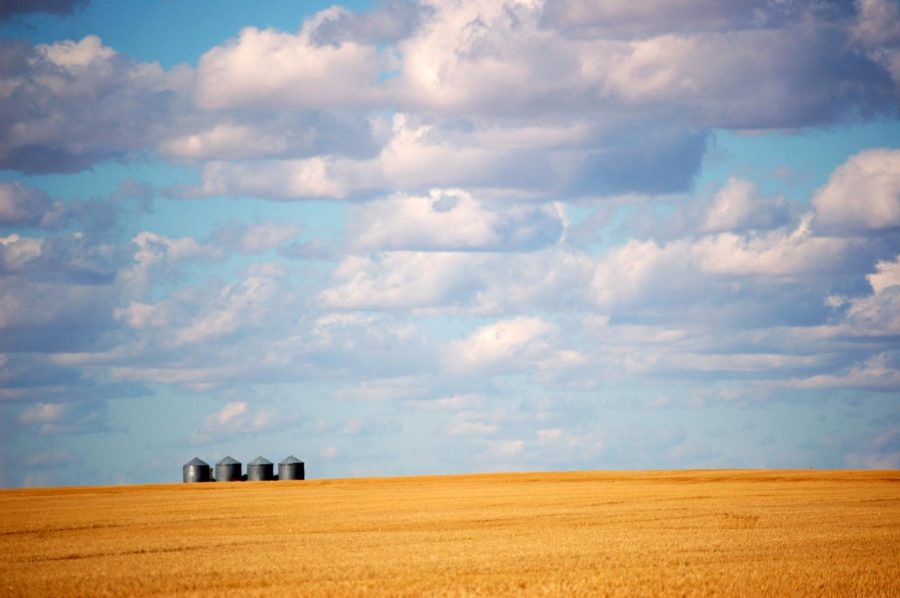The Cost of War
@swillems courtesy of FreeImages
The coming wheat and fertilizer shortage threatens countries dependent on foreign suppliers for agriculture.
Nearly two months after the Russian invasion of Ukraine began, it’s clear that the world we live in has been fundamentally changed. Russian leadership has unleashed horrors not seen since the second world war on the Ukrainian people, with indiscriminate shelling of civilian areas, mass graves, and executions in occupied territories. It’s obvious that this is a war that has deprived the Ukrainian people of their human rights, and that this is a fight for the future of the Ukrainian state, language, and culture. But as we all have now seen, this war is not only affecting Ukraine and Russia. For only the second time in my life, gas has surpassed four dollars a gallon in some parts of the country, and those living in Europe are facing looming gas and fuel shortages while scrambling to find a replacement for the loss of Russian production.
Make no mistake, the increasing cost of gas makes day-to-day life exceedingly difficult for those who are already the most vulnerable among us. However, it is a cost that we must come to terms with if we wish to punish the Russian government to the fullest extent, and it doesn’t even come close to what the Ukrainian people must bear to defend their nation. However, a lesser known cost, one that will become increasingly apparent in the coming months and years, has the potential to take millions of lives.
It’s obvious that we live in a world more interconnected than any other point in human history. Using just my smartphone I can talk to someone on the opposite side of the world. Many of us wear shirts weaved in Bangladesh with cotton from China. We drive cars built with taconite from Minnesota, using technology from Taiwan, and manufactured in Japan. It’s a matter of where manufacturing can be done for the least amount of cost, and most of these locations are in areas with already established industries, cheap labor, or specialists in the field. Global container shipping makes it cheaper than any other point in history to move products around the world at a whim, with safety guaranteed by American naval policing.
All of this interconnectedness is facilitated by the fact that most nations around the world have agreed that it’s in poor taste (an act of war) to raid rival shipping lanes, and those who don’t agree are bullied into submission by the American navy and its allies. But it’s important to realize that more than just semiconductors and t-shirts are being shipped around the world and back. This development in global history has had the side-effect of certain countries becoming reliant on other states to provide a significant amount of their food supply. Global trade has allowed nations to exceed their carrying capacity, or the amount of people that the land can support with agriculture. At first glance, and in many ways, this is a largely positive development. Famines now have more reliable means than any point in history to be alleviated, and population explosions no longer mean starvation.
However, there’s a dark side to this global exchange. Any significant interruption in this supply chain, if not rapidly replaced, can lead to thousands or more casualties. One of the most grim examples of this in recent history is Somalia. In 1992, in the aftermath of the disastrous Somali invasion of Ethiopia, the nation fell into intractable civil war. Over the course of a few months, centralized governing in Somalia collapsed almost entirely. This led to a near-total failure in the food supply chain and roughly 300,000 deaths. Local clans withheld and hoarded agricultural aid, and constant fighting made the region unsafe for exporters. In the next few years, we may see this situation play out on a global scale but with far more casualties unless there is a radical, and likely impossible re-distribution of global food supply.
For some context, it’s important to recognize how vital both Ukraine and Russia are to the global agricultural system. Ukraine has been known historically as the “breadbasket of Europe,” and for good reason. Both Russia and Ukraine occupy an incredibly fertile belt of agricultural land stretching above the Caspian and Black Seas that are among the most agriculturally productive regions of the world. Russia makes up 19.5% of global wheat exports, and Ukraine makes up 8.97% of wheat exports globally. Together, Russia and Ukraine make up nearly 1/3 of global wheat exports. These two sources of grain are already essentially completely out of the global market.
The southern coast of Ukraine is a war zone. Russian ships have reportedly fired on civilian ships multiple times in the Black sea and naval mines repeatedly stray out of conflict zones. Insurance companies are either outright refusing to insure ships passing through the Black Sea or are charging premiums more expensive than hiring the ship itself. Sanctions and war are killing the Russian naval export market, and Ukraine has no viable way to trade with outside countries via sea.
On top of this naval trade breakdown, the planting season in Ukraine will be severely restricted this year, and likely for the foreseeable future. Many who would normally be engaged in agriculture are either dead, fighting, or have left their land. There simply won’t be a replacement for these sources, especially as Russia endures a poor growing season and minor drought. Some analysts have aptly pointed out that the last time wheat prices saw a major jump, the Arab Spring revolutions swept the MENA region. The true cost of this won’t be apparent for some time, but unless major adjustments are made thousands, possibly millions of people will starve.
Nearly every trade sector in Ukraine will be affected by the war. Ukraine’s economy is set to contract by 54% overall, and far more vital resources will be taken off the market in the future. Neon gas, vital for the lasers used in the manufacture of semiconductors, comes primarily from Ukraine, which makes up 70% of the world’s and 90% of America’s supply of neon gas. Most of it comes from Mariupol and Odessa, which are destroyed and under Russian occupation or under naval blockade, respectively. This will compound the already acute semiconductor shortage, spiking their prices for the foreseeable future and interrupting the manufacture of any product that needs semiconductors, from phones to cars.
A 2009 UN report found that there is 1.5 times the amount of food in circulation necessary to feed the entire world population, meaning that there is literally more than enough food to feed everyone. But, like most things, it’s a matter of logistics. It’s difficult to ship perishable food halfway across the world, especially if where it’s going is unstable. On top of this, most of the cereals produced in the agriculturally productive regions of the US go to livestock. And there is going to be waste involved, and no one is better at wasting food than Americans. It would be nearly impossible to fill in the gap that Russia and Ukraine have created in the food supply chain under normal circumstances, but we live in far from normal conditions. Due to the drought in Russia, Moscow has already tightly restricted exports and the agricultural department has recommended banning all exports. Russia also produces much of the chemicals necessary to synthesize fertilizers, which will be incredibly difficult or impossible to attain from Russia. That means that farmers from Brazil to Nigeria to right here in the United States will face major shortages in fertilizer, severely cutting agricultural production.
The stresses this war has placed on the established systems of global trade will likely cause famines and possibly revolution across the Middle East and West Africa. The obvious costs of the war, such as gas price hikes, certainly make life incredibly difficult for those already struggling in the US and Europe. But the coming food shortage will cause deaths, and it will kill people who have zero connection or involvement with the war at all. The world is facing a crisis unprecedented in modern times, and the systems we have come to take for granted will be pushed nearly to the point of failure. The cost many must bear in the West is difficult, but it doesn’t compare to the brutality the Ukrainians are facing every day or the famine that many in the undeveloped world will have to endure.




































![Teacher Lore: Mr. Hillman [Podcast]](https://bsmknighterrant.org/wp-content/uploads/2025/03/teacherlorelogo-1200x685.png)





